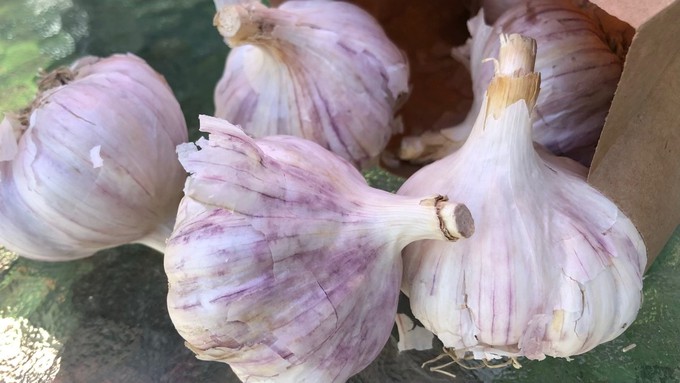
Learn about planting garlic -- and preserving it, too

Garlic planting time is coming up quickly. Garlic is an important member of the allium family, which also includes onions, shallots, leeks and chives. Kathy Morrison
Growing your own food and then cooking it can be thrill for a beginning gardener. But even folks experienced in edible gardening are likely to learn something fun in an upcoming combo class on alliums -- garlic, onions, shallots and other plant relatives.
"Garlic, Shallots and More" will be offered 9 a.m. to noon this Saturday, Sept. 16, by the UCCE El Dorado County master gardeners and master food preservers.
Here's how they explain it: "The master gardeners will discuss how to successfully select, grow, and harvest onions, garlic, shallots, leeks, scallions and chives. Information covered will include soil preparation, fertilizer requirements, pest management and water needs.
"The master food preservers will discuss safe preserving methods for your harvest. Additionally, you will go home with fantastic recipes, tips and tricks for your alliums."
The class will be held at the Sherwood Demonstration Garden, 6699 Campus Drive in Placerville. It is free, but the organizers ask that interested folks register ahead here.
The El Dorado master gardeners have two other classes on Saturdays this month: Greenhouse Gardening on Sept. 23 and Shade Gardening on Sept. 30. Each is 3 hours long, 9 a.m. to noon. For more information on these and other events, go to the calendar on their website, https://mgeldorado.ucanr.edu/Calendar/
Comments
0 comments have been posted.Sacramento Digs Gardening to your inbox.
Food in My Back Yard Series
April 1: Don't be fooled by these garden myths
March 25: Fertilizer tips: How to 'feed' your vegetables for healthy growth
March 18: Time to give vegetable seedlings some more space
March 11: Ways to win the fight against weeds
March 4: Potatoes from the garden
Feb. 25: Plant a fruit tree now -- for later
Feb. 18: How to squeeze more food into less space
Feb. 11: When to plant? Consider staggering your transplants
Feb. 4: Starting in seed starting
Sites We Like
Garden Checklist for week of March 30
Your garden doesn’t mind April showers. Get busy now to enjoy those future flowers.
* Get ready to swing into action in the vegetable garden. As nights warm up over 50 degrees, start setting out tomato, pepper and eggplant transplants.
* From seed, plant beans, beets, cantaloupes, carrots, corn, cucumbers, melons, pumpkins, radishes and squash. (Soak beet seeds overnight in water for better germination,)
* Plant onion sets.
* In the flower garden, plant seeds for asters, cosmos, celosia, marigolds, salvia, sunflowers and zinnias.
* Transplant petunias, zinnias, geraniums and other summer bloomers.
* Plant perennials and dahlia tubers for summer bloom.
* Transplant lettuce and cabbage seedlings.
* April is the last chance to plant citrus trees such as dwarf orange, lemon and kumquat. These trees also look good in landscaping and provide fresh fruit in winter.
* Smell orange blossoms? Feed citrus trees with a low dose of balanced fertilizer (such as 10-10-10) during bloom to help set fruit. Keep an eye out for ants.
* Apply slow-release fertilizer to the lawn.